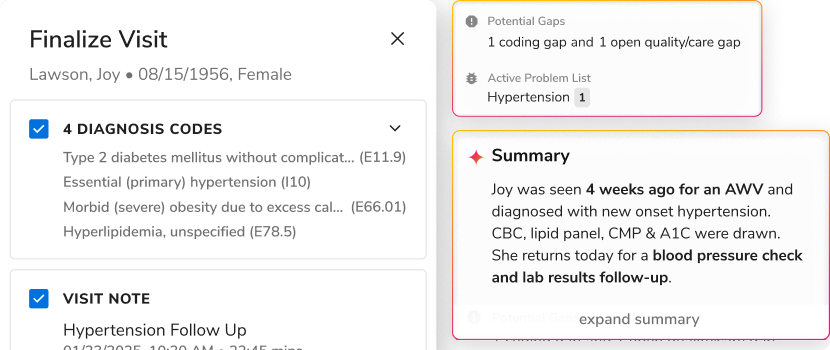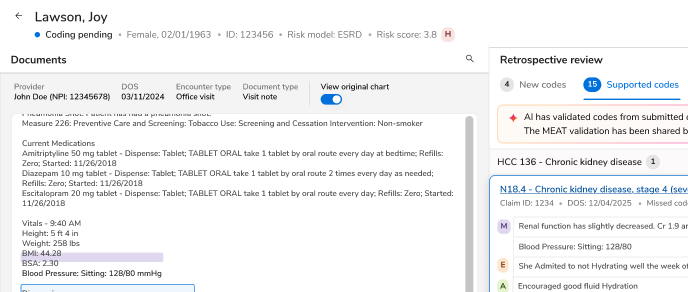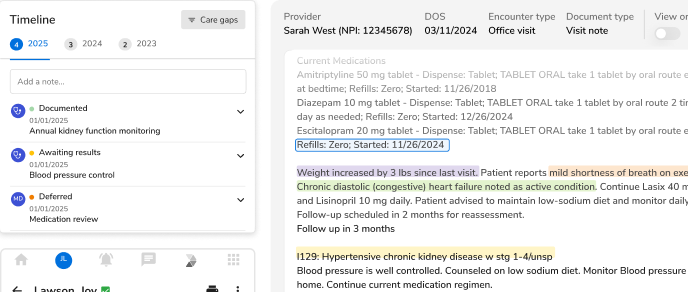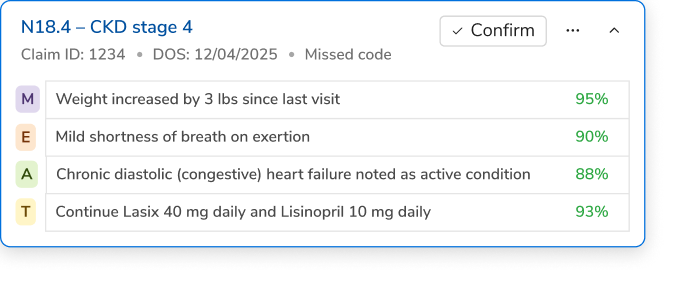What are the Best Practices for Successful EHR Integration in Value-based Care?

Over 95% of hospitals have a certified EHR technology in place today, yet EHR integration still remains a sticking point, resulting in reduced efficiencies, higher costs, and negative outcomes. As of 2015, only 65% of hospitals could make use of electronic clinical information, but only about 4 out of 10 hospitals could integrate data into their EHRs.
How has EHR integration assumed a crucial role over time?
The preferred method of providers to extract data is the EHR after all, and with over 200 different kinds of EHRs today, EHR integration has become a crucial step in the success of data-driven care. Plus, with new reforms in place encouraging the adoption of EHRs and the evolution of apps, wearables, and IoT, there is an expanded need of seamless data exchange.
Moreover, unlike the banking or retail industry, where organizations may be using a maximum of three or four different kinds of systems, healthcare organizations could be using anywhere from four to 600 different systems. It’s not an easy task to make them talk and understand what they’re saying. It’s paramount in these times that organizations try to connect all these dots and try to synchronize the information.
Why is EHR integration still a pain point?
Even when healthcare organizations understand the challenges of having two different systems working alongside each other, it remains a difficult task to bring these two different systems to communicate with each other. Here are some challenges organizations usually face with EHR integration:
- Finding the right data schema: There are several thousands of EHRs out there in the world, with each system having a different schema, different technological architecture, service models, and even capabilities. That makes it difficult to extract data out of the EHR and develop a common standard interoperability format to share data.
- Data acquisition, conversion, and standardization: The fact that two different EHRs have two different schemas and documentation practices that vary from one vendor to another, implies that any data that may be captured into EHRs can be interpreted in several different manners.
- Accurate transformation: Data received during integration can be in various formats- CCDA, HL7 feeds, X12 files, just to name a few. Capturing, formatting, and standardizing that data is required to bring all the critical information in a single format. However, in this process, it’s paramount to ensure that the essence of information remains and no transformation has errors.
- Data migration: Moving data in batches from EHRs is a complex undertaking and involves prior planning to ensure that data will be safe at every step through the transition. There are three major considerations when planning data migration:
-
- Network and hardware restrictions
- Inaccessibility of data during migration
- Risk of major data loss by leaving data in a vulnerable migration state
Solving EHR integration for the long haul
It takes everything from combining messages with programmed logic to drawing clinical information out to bring the process of EHR integration to the finish line. For the past several years, elves like HL7 feeds and APIs have tried to make this process smoother. Also, several EHR vendors have created open APIs and app stores for developers to ease integration with their EHRs. Today, we even have FHIR sparking hopes into the everlong dream of healthcare interoperability. However, that too, remains a work in progress.
So what do we do? How do we even begin to solve this challenge?
The willingness to share healthcare data among payers and providers is certainly an exciting development. Adaptive architectures like data lakes and the analytical tools available provide the crucial, actionable intelligence required to unlock the true potential of your EHRs.
Innovaccer deploys a unique, Big data-based Integrated Data Lake that enables healthcare organizations to automate the process of extract, transform, and load (ETL). Developing such holistic data management platform is crucial when shifting to value-based care.
A phase-wise strategy for valuable data
There are several data management platforms being offered to healthcare organizations today, each with their own sets of advantages and disadvantages. We at Innovaccer prefer a Hadoop-based Big data repository, a powerful and transformational solution that offers healthcare data integration in a flexible, agile manner. And given the rate with which healthcare is transforming, flexibility and agility are central to survival and success.
Innovaccer deploys a phase-wise integration process to ensure the integrity of critical healthcare data:
- Data Acquisition
Datashop’s data lake has pre-built connectors to 60+ EHRs. The data lake extracts data from no matter which EHR. If the EHR has its own API and a known schema, that just makes the process of ETL smoother. Even if no API or schema is found, Datashop’s Integrated Data Lake explores the databases, flat files (CCDA, CCLF, XML, CSV), HL7 interfaces, and other web services and extracts the data from the EHR.
- Data Cleaning
The data lake works on identifying duplicate records, incomplete records, improperly formatted or outdated data as well as finds if the data went through improper parsing of record fields from disparate systems.
- Data Standardization and Normalization
All the acquired data is standardized with advanced data mappers using various regular expressions and standardized code checks to bring all crucial information from every touchpoint in the patient care process, in a single format, a single source of truth.
- Data Quality
The data lake’s agile algorithms identify bad data, missing values, non-standard column values, and perform a thorough audit of the data ingested to ensure there are no broken transformations. In case of any anomaly, the tool alerts developers so that they can take corrective actions to ensure data validity on a continuous basis and have data integrity maintained over time.
- Enterprise Master Patient Index
After all the ingestion and conversion of data, the data lake provides users with holistic, longitudinal patient records linked through common linkable identifiers, to enable care coordination, payment calculations, population health management, and contract performance reviews.
Ultimately, Datashop’s Integrated Data Lake assists healthcare organizations in leveraging disparate data to implement population-wide improvement initiatives and create a roadmap for success in the era of accountable care.
The road ahead
The advent of technology and data types in the world of healthcare have really highlighted the challenges healthcare faces with interoperability and integration. EHRs are just a tiny speck in the world of untapped sources of data in healthcare, and integrating these sources is the key to generating maximum value-based outcomes.
We believe that healthcare systems need a flexible, agile, and a scalable solution for their data needs. This era of healthcare transformation requires organizations to operate effectively and efficiently to generate a tangible return on their investments, and Datashop advances with a data-driven focus. This focus has enabled us to achieve measurable improvement in both clinical and financial outcomes:
- Saving over 1100 care coordination hours per week.
- Reducing the ER utilization by 6.65%.
- Generating the highest quality reporting data in the state of New Jersey.
To learn how you can capture valuable information from your EHRs at the point of care and reap the maximum benefits, get a demo.
For more updates, subscribe.
Meet us at the Care Coordination and Technology Congress from January 24-26 at Renaissance Atlanta Waverly Hotel & Convention Center, Atlanta, GA and accelerate your journey to value-based care.

.png)





.png)









.svg)
.svg)

.svg)

